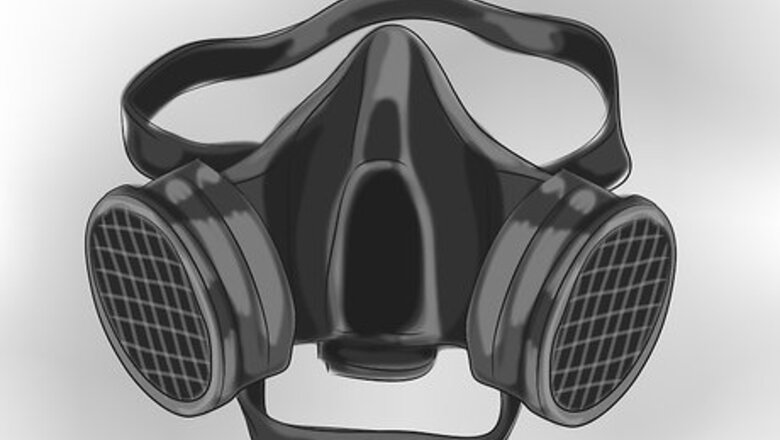
views
Creating the Mouthpiece
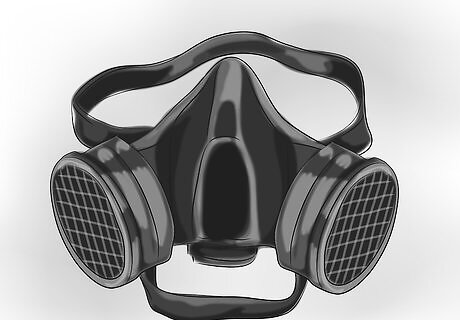
Find a respirator mask that fits your mouth. A respirator mask with filters on the side and a mouthpiece over the front is preferred. These can be found at most hardware or army surplus stores. Make sure that any professional grade mask you buy has removable side filters.

Convert an airsoft mask for tighter budgets. You could use a half airsoft mask that only covers your mouth, or a full airsoft mask with the goggle portion removed. These can usually be found at sports equipment stores and can be cheaper than professional respirator masks.
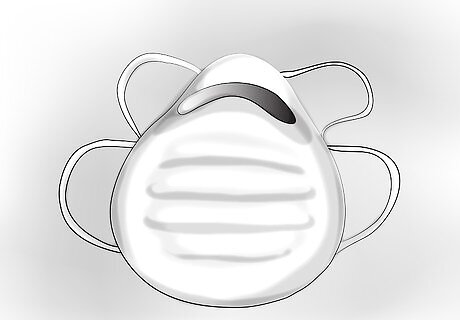
Use a particle respirator for extreme budgeting. If you cannot find a full respirator mask, or if your budget does not permit it, you could buy a simple dust mask, also called a particle respirator, instead. These masks do not have mouthpieces or filters and are usually simple white masks that fit over your mouth If possible, look for one that comes with a thick strap instead of one that uses elastic string.
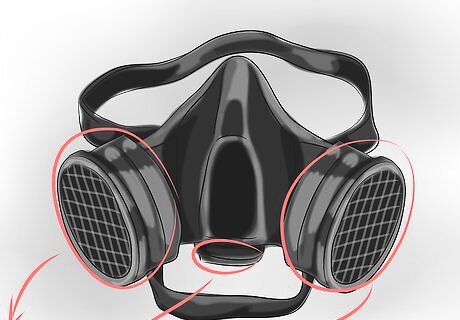
Remove any unnecessary pieces. Twist or unscrew the filters on the side of your respirator mask. The mouthpiece of the mask can stay if it is fairly flat, but if it bulges out more than 1 inch (2.5 cm) or so, it should be removed, as well. If you are using a full airsoft mask, remove the goggle portion and cut away any plastic that sits above the goggle glass. Use a sharp knife or saw to remove this plastic. Sand down any sharp edges with an electric sander to avoid injuring yourself on your mask.

Cut a hole into the mask, if necessary. Most professional respirator masks and airsoft masks have a small hole where the mouthpiece is/was located, in which case, you do not need to make a cut. If using a dust mask, however, you will need to cut a hole 1 to 2 inches (2.5 to 5 cm) across, directly above the point where your mouth will be. To get a better idea of where the mouthpiece needs to be, place the dust mask on your face and use a pencil to mark where your mouth is on the mask. Remove the mask and cut the hole using scissors or a utility knife.
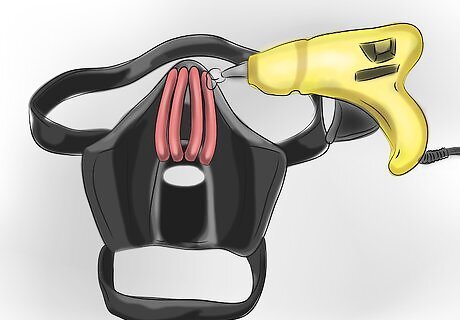
Attach thin tubing above the mouth area. Cut four 3½ inch (8.89 cm) pieces of ½ inch (1¼ cm) thick tubing. Use hot glue to attach these four pieces at even intervals along the top of the mouthpiece. The opposite should be glued down to the top part of the nose piece on your mask. If you do not have a mouthpiece on your mask, put the mask on your face and lightly mark with pencil a line where your upper lip is. Arrange the pieces of tubing along this line at even intervals. Thin tubing like this can usually be found in a hardware store. For an easier, cheaper alternative, you could use flexible straws instead of tubing. Cut, bend, and shape the straws before gluing them down. Fabric glue or jeweler's glue can be used in place of hot glue if hot glue is unavailable.
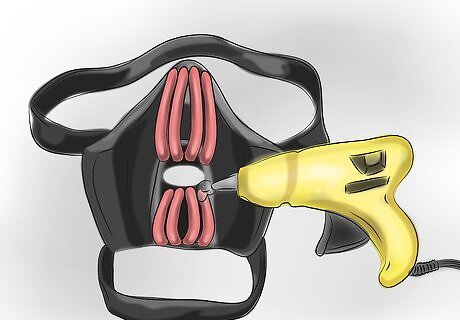
Attach thin tubing below the mouth area. Cut another four 3½ inch (8.89 cm) pieces of ½ inch (1¼ cm) tubing. Use hot glue to attach these evenly along the bottom of the mouthpiece section. The other end of each piece of tubing should be glued down to the chin portion your mask. If you do not have a mouthpiece on your mask, put the mask on and lightly mark the line where your lower lip is with a pencil. Arrange the pieces of tubing along this line equally. As suggested earlier, you might use bendy straws as an alternative to tubing.

Attach thin tubing over the cheeks. Cut two 4½ inch (11.43 cm) pieces of ½ inch (1¼ cm) tubing and two 7½ inch (19 cm) pieces of ½ inch (1¼ cm) tubing. Starting with the smaller pieces: Hot glue the smaller pieces directly next to the end pieces of tubing above the mouth. The lower end of these two new pieces of tubing should be hot glued to the sides of the mouthpiece. If your mask does not have a mouthpiece, then glue the other end to the midpoint in between your top and bottom mouth tubing rows. Hot glue the larger pieces next to those you just glued on to the top end. Glue the bottom end of these final pieces of tubing next to the bottom end of the lower mouth tubing row. As previously mentioned, you could use bendy straws as an alternative to tubing. Let everything dry completely so you do not break loose the seal of your glue.
Adding the Headpiece
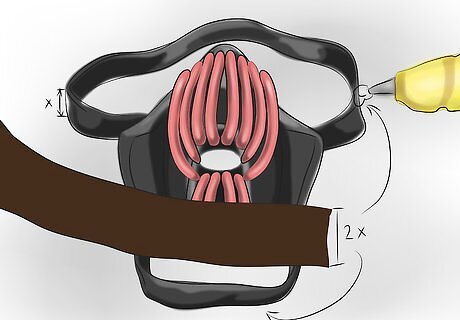
Cover the side straps of your mask with pleather. Cut a strip of pleather, or other tough black cloth, so that is twice as wide as the width of your straps and just as long. Use hot glue or fabric glue to cover the side-straps with this material, hiding the seam or ends of the material on the inside of the strap. If you do not have wide straps on your mask and only have thin elastic cord, go out and buy a band of 2 inch (5 cm) thick black elastic. Cut this piece of elastic to match the length of your elastic cord and glue it to the mask over the cord. Keep the edges of this band on the inside of the mask to hide them.

Measure the top of your head. Use a soft tape measure to determine the distance from the tip of your nose to the base of your skull. Also measure the width of the bridge of your nose at both the top and bottom. For a more accurate fit, place the mouthpiece portion of your mask on before proceeding. Measure from the top of this mouthpiece, over your face and head, and down to the point at which the strap meets in the back of your head.
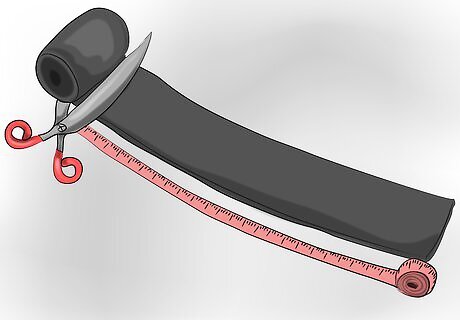
Cut a piece of flexible foam to match the measurement. Look for black soft foam that is no thicker than ½ inch (1¼ cm). Use fabric scissors to cut out a strip of foam that matches the measurement of the top of your head, plus one inch (2½ cm) to allow overlap for gluing.
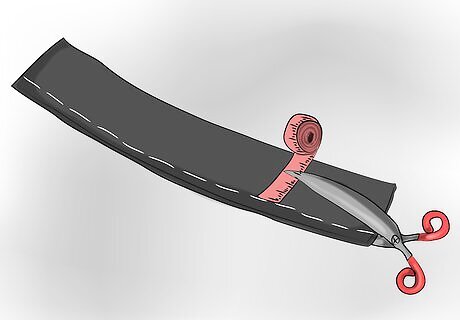
Trim the strip to the width of your nose. To begin with, the foam should be as thick as the widest part of your nose. Next, you will contour the shape of your strip to fit your nose better.
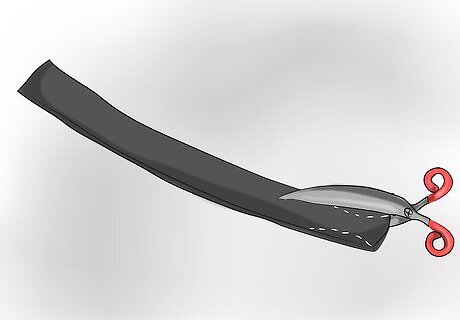
Fit your strip to the shape of your nose. On one end of the foam, narrow down the part where the upper bridge of your nose will be. If necessary, place the foam over your head temporarily and mark the area you will need to trim with a pencil.
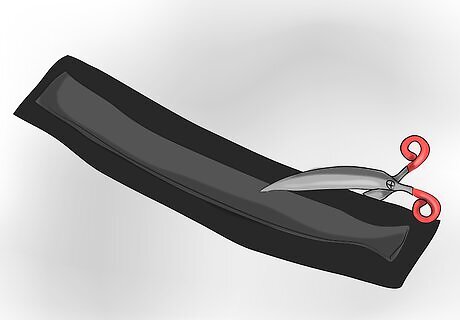
Cut a matching piece of pleather. Lay your foam over another piece of black pleather and trace the shape onto the other material. Use fabric scissors to cut the shape out of the pleather. If you do not have pleather, choose another durable, tough black fabric.

Attach the pleather to the foam. Apply thin lines of hot glue to the back of the pleather and press the foam in place onto the glue. Make sure that the edges line up as evenly as possible.
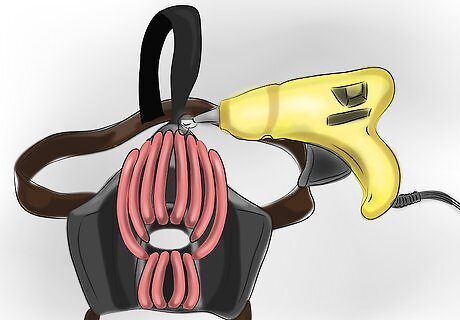
Attach the foam to your mouthpiece. The narrowed part of your headpiece needs to be hot glued just above the top part of your mask nose piece. The wider, even section of the back of your foam strip should be glued to the pleather-covered strap in the back. Make sure that the strap goes across the front, top, and back of your head in a straight line. Glue the edges of the foam headpiece to the inside of your mouthpiece, hiding them from sight.
Finishing Details
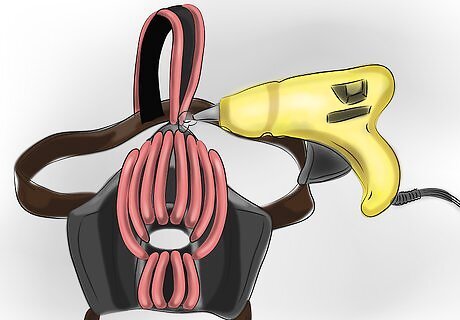
Place thin tubing alone the sides of your top headpiece. Cut two pieces of ½ inch (1¼ cm) tubing that match the measurement you took of the top of your head. These pieces should be the same length as the strip of fabric that covers the front, top, and back of your head. Hot glue these pieces of tubing along the edges of the top headpiece, one tube to each edge. Note: these pieces of tubing are too long to substitute plastic flexible straws. If you cannot find tubing, you could either skip this step or use pipe cleaners covered in pleather in place of the tubing.
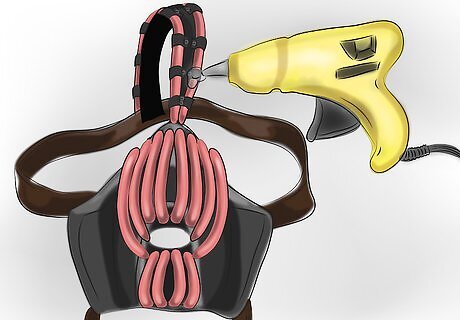
Glue small bolts near the headpiece tubing. Take small bolts and hot glue them in pairs along the top headpiece. Each bolt should be on the inside of the tubing along the edge of your headpiece. You should have five to eight pairs of bolts, or 10 to 16 individual bolts, in total. Space the pairs apart at even intervals. If you do not have bolts, you can use belt studs or similar metallic objects, instead.
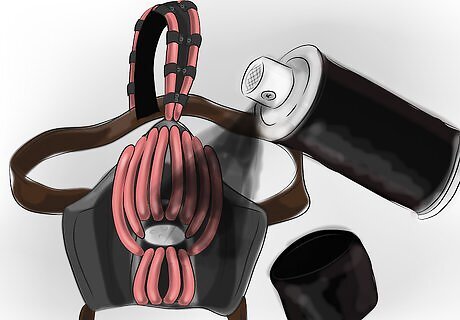
Spray paint your mask black. Bane's mouthpiece is a dark, intimidating black. To get a consistent, uniform appearance, use spray paint that is labeled to work on a variety of materials (metal, plastic, fabric) and spray the entire mask black. Depending on where you spray paint, you may want to put a layer of newspaper or a drop cloth down before spray painting. Let your mask dry for several hours in a warm spot with low humidity.
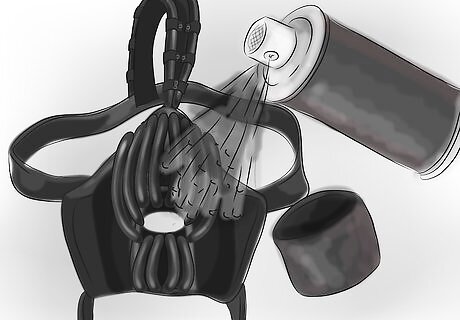
Paint the mouth tubing silver, if desired. For a slightly more authentic look, you can use silver metallic paint and a paintbrush to paint the tubing of your mask silver. This is not strictly necessary, but can add more realism to the final mask. Check the label to make sure that the paint is safe for use on plastic. Let the paint dry.
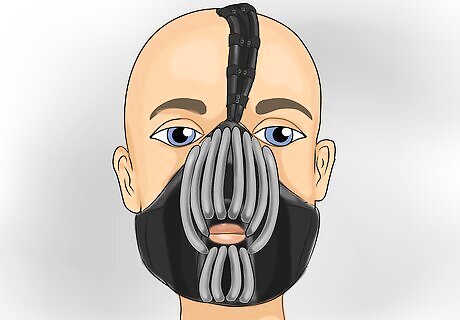
Try the mask on. Your Bane mask should now be complete. Try it on and see how it looks. If you notice that the straps are loose or tight, make necessary adjustments by trimming down or gluing extra fabric to lengthen the straps.




















Comments
0 comment